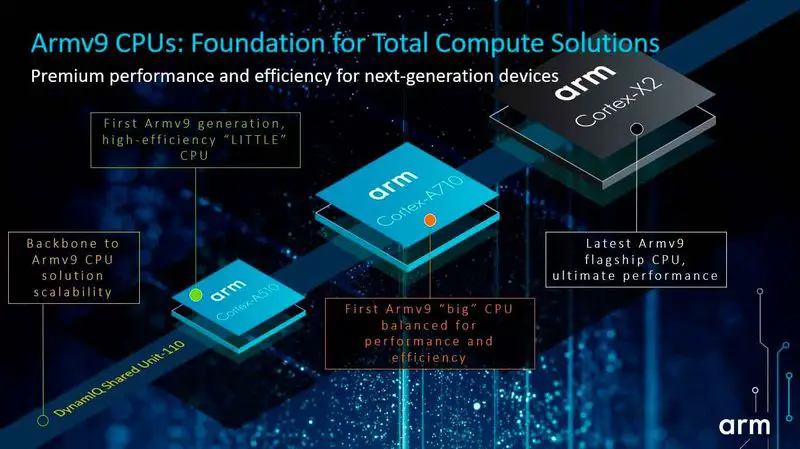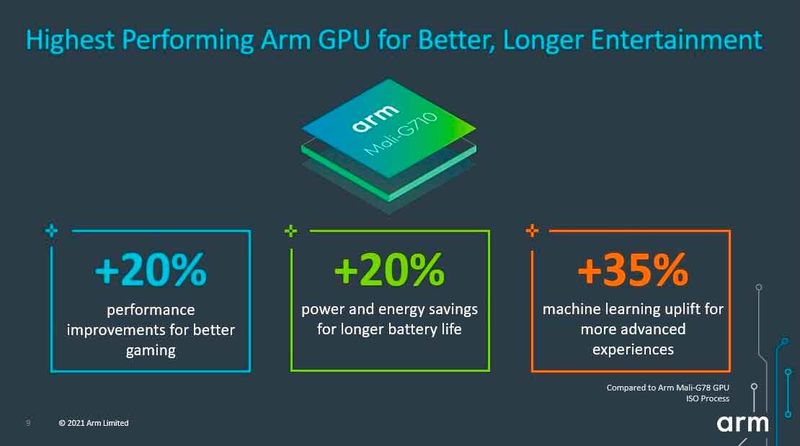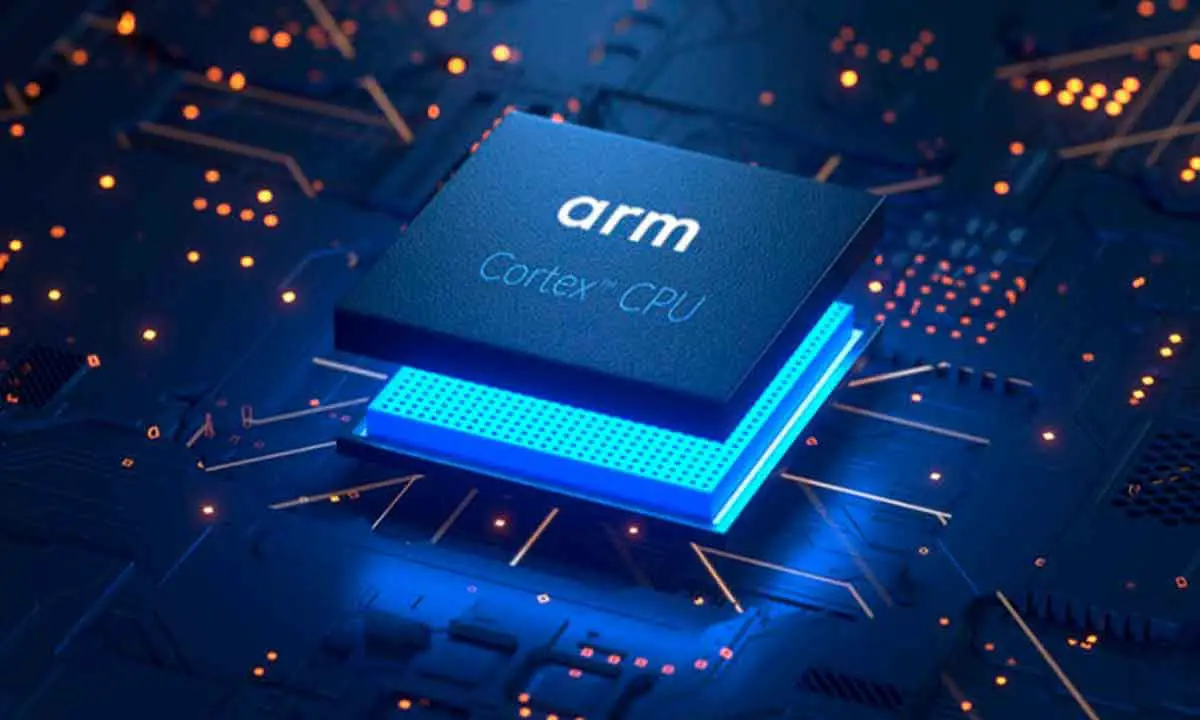Since the announcement a few months ago of ARMv9, we have been waiting for the first ARM Cortex CPUs based on this new architecture. After a decade in which ARM has taken absolute control of the market for smartphones, tablets, and many other devices, and more recently has begun the leap into the PC world, it was time for a major overhaul of the base on which the CPUs that govern billions of devices worldwide are built.
The wait is over, today ARM Holdings announced its new ARM Cortex-X2, Cortex-A710, and Cortex-A510 CPUs, as well as Mali-G710, G610, G510, and G310 GPUs. With all these new chips ARM intends not only to maintain its absolute hegemony in the smartphone field but also to improve its position in the division of honor, the PC market. And after the lesson given by Cupertino with Apple Silicon, everything now seems possible.
ARM Cortex-X2
Presented a year ago, ARM Cortex-X1 was interpreted as ARM Holdings’ first step towards its long-awaited leap into the PC world, without forgetting what is currently its main market. Thus, we have seen it in the Snapdragon 888, the top-of-the-line SoC for smartphones in 2021.
With the ARM Cortex-X2, the company promises a performance improvement of 30% over the flagship of this 2020, so we understand that it speaks of a direct comparison between X1 and X2. And we are not surprised, since, as was already the case with X1, ARM Cortex-X2 is based on the performance first model, in which, without completely neglecting energy efficiency, the aim is to provide the highest possible performance.
Proof of this is that its design allows the integration of up to eight CPUs in a single DSU cluster, which can be accompanied by up to 16MB of level 3 cache. In the absence of being able to check its performance, which in some specific aspects ARM estimates at up to 40%, it is clear that we will see an ARM Cortex-X1 in the high-end SoCs of 2022, but we should not rule out the possibility of seeing the first laptops, whether they have Windows or Chromebooks, equipped with this CPU.

ARM Cortex-A710
Cortex-A710 is the evolutionary step, already in the ARMv9 architecture, of the popular Cortex-A78 CPU, introduced a year ago. And, like its predecessor, ARM Cortex-A710 seeks the middle ground between performance and efficiency, seeking to improve on both points. According to ARM, this has been achieved, as its energy efficiency has improved by 30%, while performance has improved by 10% compared to the A78 CPU.
Given its performance and, especially, its improvements in terms of power consumption, it is clear that the AMR Cortex-A710 is aimed at the mid-range, including, of course, models bordering on the high end. It is even possible that we will see it in the SoC of some top-of-the-range manufacturers who wish to have a top-of-the-range model that, without being able to compete with the market leaders in terms of performance, does offer features that make it stand out from the rest in its segment.
Although, as we have already mentioned, X2 seems to be ARM’s big bet for its leap into notebooks, we should not forget that A78 already tried it a few months ago with the Cortex-A78C variant, aimed exclusively at this market niche. Thus, we cannot rule out that the Cortex-A710, either in its original design or through a variant of the same, will also make an appearance in an entry-level laptop focused on mobility and energy efficiency.
ARM Cortex-A510
If X2 was performance and A710 the balance between performance and efficiency, with the ARM Cortex-A510 we see that the focus is on energy efficiency, despite which it also poses a significant leap in performance compared to its predecessor, the Cortex-A55, which is ahead in this point by a remarkable 35%.
The interesting thing about this CPU, which we will undoubtedly see in the SoCs of many mid-range and entry-level smartphones, is that ARM Holdings also intends to use it in the wearable market, devices from which we do not expect great performance beyond their functions, and in which we do value very positively all those aspects that help us to space out the time between charging and charging as much as possible.

Mali-G710, G510, and G310 GPUs
Hand in hand with the new ARM Cortex CPUs, ARM has also introduced three new Mali GPUs. And yes, it is indeed no coincidence that three GPUs come with the new ARMv9-based CPUs because although SoC manufacturers will opt for the combinations they prefer, ARM Holdings does establish the ARM Cortex-A710 with Mali-G710, Cortex-A710 with Mali G510, and Cortex-A510 with Mali G310 pairings.
The Mali-G-710 GPU focuses on performance, with the focus on premium smartphones and Chromebook notebooks. Its high-end profile makes it the successor to the Mali-G78 and, according to the technology company, it represents a 20% leap in both performance and energy efficiency and a jump of up to 35% in processing tasks related to machine learning, a discipline in which the floating-point calculation functions of GPUs are particularly useful. Along with the G710 also comes the Mali-G610, a “subprime” version that brings much of the G710’s performance to the upper mid-range.
Like the ARM Cortex-A710 CPU, the Mali-G510 GPU seeks a balance between performance and efficiency. A natural replacement for the Mali-G57, this GPU nevertheless offers a 100% performance improvement over its predecessor, the same percentage applied to increased performance in machine learning-related tasks, and a 22% improvement in terms of power consumption, thus offering greater autonomy.
With the Mali G310, as you might have guessed, ARM is proposing the evolution of the veteran Mali-G31. And like the ARM Cortex-A510 CPU, it is aimed not only at the smartphone market, mainly at the entry-level, but also at wearables and, according to its manufacturer, at a field that we will probably not take too long to see grow, augmented reality.





